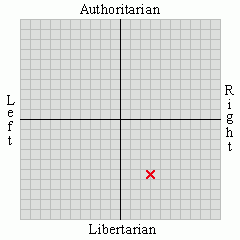 I spend a lot of my day reading over evidence. Letters, memos, e-mail, things like that. So I see how a wide range of people write, in settings both formal and candid. And for some reason, a large number of people seem to actively resist the correct use of apostrophes.
I spend a lot of my day reading over evidence. Letters, memos, e-mail, things like that. So I see how a wide range of people write, in settings both formal and candid. And for some reason, a large number of people seem to actively resist the correct use of apostrophes.Misapostrophication is a sin of language, it irritates me like head lice, and it needs to be stamped out. Apostrophes are not that difficult. ("Apostrophes" are punctuation marks, not the name of a Greek philosopher.) Here are the rules, and there are only two of them.
Rule One: Possessives and Plurals
This rule applies only to nouns. Remember the schoolhouse rock song: “A noun is a person, place or thing.”
A plural is the word you use when there is more than one of something. Plurals do not use apostrophes. Generally, you will add the letter “s” to the regular form of a word to indicate that it is plural. “Lawyer” becomes “Lawyers.” “Airplane” becomes “Airplanes.” “Hallucinogen” becomes “Hallucinogens.” There are a large number of unusual forms of plural words – “Person” becomes “People,” for instance, or “Ox” becomes “Oxen.” But mostly, just add an “s,” don’t use the apostrophe, and you’re good to go with a plural. Generally, non-"s" type plurals are animals of one kind or another.
A possessive is something that belongs to something else. “The blue car is Omar’s.” That sentence identifies the car (the blue car) and it attributes ownership (to Omar). To show that one noun in a sentence owns another noun, add the “s” with an apostrophe.
When ownership becomes collective or if the singular form of a word naturally ends in an "s", you switch the "s" and the apostrophe. Assume that our subject is a pack of wild hyenas. “The hyenas’ laughter could be heard miles away.” Notice how the singular – “hyena” – becomes pluralized. Because we’re talking about more than one hyena, the word is “hyenas.” Collectively, the hyenas are the ones whose laughter we are discussing; it’s not just the laughter of a single hyena but rather the laughter of all of them together. So you put the apostrophe after the “s” in that case, indicating the use of a plural possessive.
Same thing if the singular form of the word ends in "s," usually in the case of someone's name -- for instance, "I do not find Prince Charles' wife very attractive." Note the apostrophe after the "s" in "Charles."
Got it? Good. Go on.
Rule Two: Contractions
This rule generally applies only to verbs and nouns used together.
When you have a verb and a noun that you wish to use informally, you can contract them together to create a shorter, easier-to-say word. This is written by smashing the two words together, and using the apostrophe to show what parts of the separate words have been deleted. Thus: “They have” = “They’ve”. “Let us” = “Let’s”. “It is” = “It’s”. “Do not” = “Don’t”.
Simple as that.
Example:
Now let’s see these rules in action. Consider this famous exchange from the Joseph Heller novel, Catch-22:
“What the hell kind of a name is Major Major?”
“Well, it’s Major Major’s name, sir.”
Here, two apostrophes are used in ex-PFC Wintergreen’s response to Colonel Cathcart’s question. “It’s” is a contraction for “it is”. “Major Major’s” indicates that Major Major owns the name. Expand the sentence and it becomes:
“Well, it is the name of Major Major, sir.”
There now, don't you see? It’s as simple as that.
The apostrophe -- a short, vertical line that sometimes curves depending on the font you've selected. Use it well. Use it correctly.







2 comments:
Dunkin' Donuts.
Hah!
It's good to see that I'm not the only person who doesn't appreciate seeing signs that read "employee's only."
Let's hope that the proper apostrophization spreads. (Was that a word? Well, it is now.)
Post a Comment